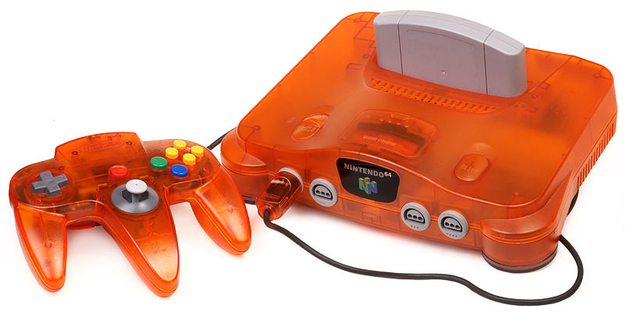PlayStation 3 (2006)
Assailed by troubles and postponements with respect to its eager Cell processor and the incorporation of a Blu-beam drive, the PS3 was a scary task from the beginning. Its online multiplayer administration was liberally membership-free yet mediocre compared to the Xbox 360 contribution and engineers thought that it is difficult to work with the variety of numerous synergistic handling units (SPUs). But this is the place where another type of lavish artistic gaming experience thrived: Uncharted 2, God of War III, Demon’s Souls, Heavy Rain, and Journey all highlighted a fate of creative, testing narrating inside rich vivid universes. Their examples are as yet being educated and scholarly.
Nintendo 64 (1996)

Created related to supercomputer expert Silicon Graphics Inc and initially given the not in the slightest degree hubristic codename Project Reality, the N64 was a disconnected monster – backwardly staying with trucks as opposed to accepting CD-ROMs yet inventive in its utilization of a simple joystick to permit precise 3D development. This, obviously, prompted Super Mario 64, the characterizing round of the time, however, the control center saw numerous different works of art, including GoldenEye, Banjo-Kazooie, Wave Race 64, and Legend of Zelda: Ocarina of Time.
Xbox One (2013)
Constructed more as a well-boxed PC than a customary control center, the Xbox One brags multicore AMD processors, HDR (and 4K video) similarity, distributed storage, game real-time, and a large group of media choices. Also, similarly, as the machine was maturing, its S and X cycles went along and supported the specs. Close by lovely forms of multiplatform hits Witcher 3, Assassin’s Creed Origins, and Fallout 4, it has likewise brought us Forza Horizon 4, Sea of Thieves, Halo 5, and Ori and the Blind Forest. Best in class, in numerous ways.
Xbox (2001)
Prodded by Bill Gates himself at the 2000 Game Developers’ Conference, Xbox was brought about by the group behind Direct X (Microsoft’s middleware for PC game engineers) as a mechanical Trojan pony to get the organization’s items into the parlor. From those somewhat Orwellian establishments came a vigorous, amazing, and invigorating machine, its back inventory of in excess of 600 games bragging one the best control center very first individual shooters in Halo, just as abrasive brawler Ninja Gaiden, dreamlike experience Psychonauts and Star Wars epic Knights of the Old Republic. From the start, Xbox comprehended the rising significance of online play, with its coordinated ethernet port and vigorous Xbox Live foundation. The main US-planned control center since the Atari VCS.
Nintendo Wii (2006)
A lot of games industry savants saw the tech specs for the Wii in 2005 and discounted it as “two Game Cubes taped together”. What they hadn’t figured on was the novel joypad, which utilized movement controls giving hindrance-free admittance to basic, impeccably planned games like Wii Sports, Wii Play, and Wii Fit. Abruptly, entire families could contend together, from the most youthful to the most seasoned – and Nintendo sold more than 100m units subsequently. A triumph for the utilitarian plan over mechanical fixation.
Sega Dreamcast (1998)

With its built-in modem and hugely innovative controllers (complete with removable memory cards doubling as handheld games machines), the Dreamcast was a visionary piece of hardware, backed up by Sega’s astonishingly creative first-party development teams. The machine saw an array of idiosyncratic titles – Jet Set Radio, Shenmue, Seaman, Rez, Phantasy Star Online – that either invented new genres or utterly revolutionized old ones. But the lack of support from western developers and the sheer might of the PS2 ensured that its life was as brief as it was beautiful.
PlayStation 4 (2013)
Based around similar tech as the Xbox One and launched almost simultaneously, the PS4 saw Sony concentrating on games rather than multimedia functionality, immediately winning the PR war against Microsoft. With its excellent controller, vastly improved online infrastructure, and seamless sharing and streaming functions, it’s an innovative system, but where it really wins is in its embarrassment of first- and second-party gaming riches. Uncharted 4, Horizon Zero Dawn, Marvel’s Spider-Man, God of War, Bloodborne, Death Stranding … all of them push at the possibilities of video games as a visual narrative medium.

